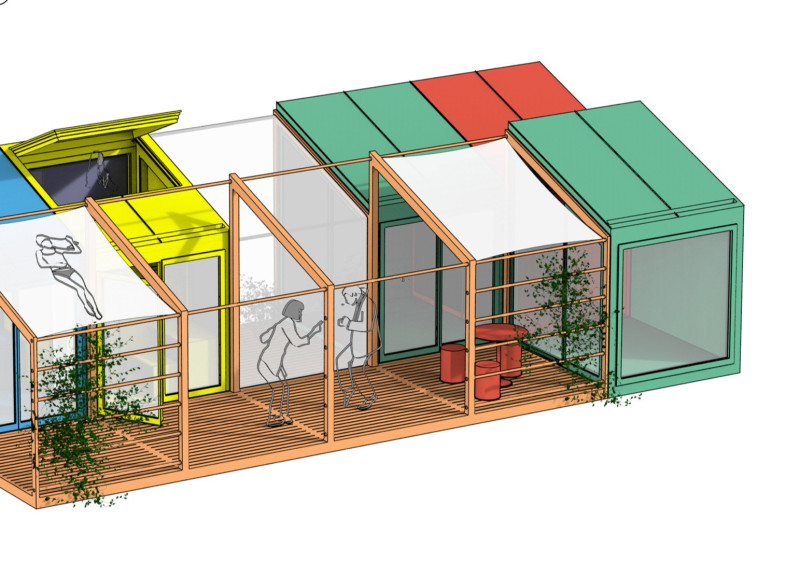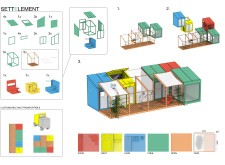5 key facts about this project
The SETTELEMENT project offers a thoughtful approach to modular living environments. It is designed for today's urban context, focusing on flexibility and community interaction. The concept revolves around customizable and transportable housing that meets the diverse needs of modern residents.
Design Concept
Central to the design is modularity, which allows for various arrangements of living units. The project includes several types of units, organized in differing quantities, such as four of one kind and others in smaller numbers. This setup enables the architecture to cater to a wide range of residential requirements. Each unit’s configuration supports varied activities, highlighting the need for adaptability in urban settings.
Functional Integration
The layout incorporates key aspects of daily life—food, rest, care, and shared open spaces. These elements are blended to promote interaction among residents while providing individual comforts. By focusing on these essential functions, the design encourages a sense of community. It allows residents to engage with one another in a meaningful way while also having private spaces for personal activities.
Spatial Efficiency
The dimensions of the units, noted as 2500, 5M², and 2000, contribute to the effectiveness of the design. These carefully considered measurements ensure that each space is optimized for its purpose. The arrangement of units maintains a balanced environment, fostering a sense of openness. This approach prioritizes usability, showing a commitment to making the most of available space.
Transportability
An important aspect of the SETTELEMENT design is its ability to be easily relocated. This transportability makes it adaptable to the changing dynamics of urban life. It allows the housing to respond to shifting demographic patterns and site conditions. The design accommodates various lifestyles, ensuring it can serve different communities over time.
The layout of the units, with their integration of essential living functions, creates a system that not only provides shelter but also promotes a connected way of living.



















































